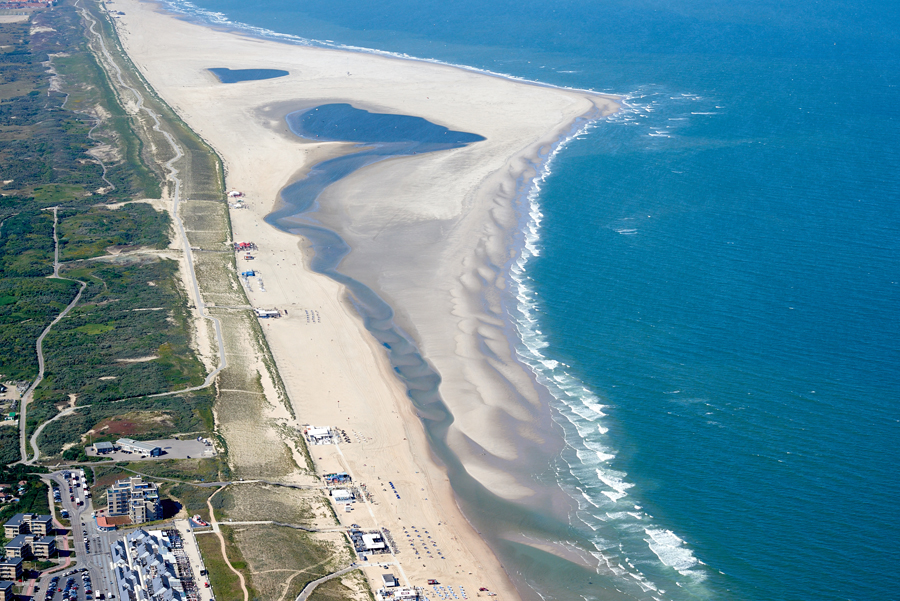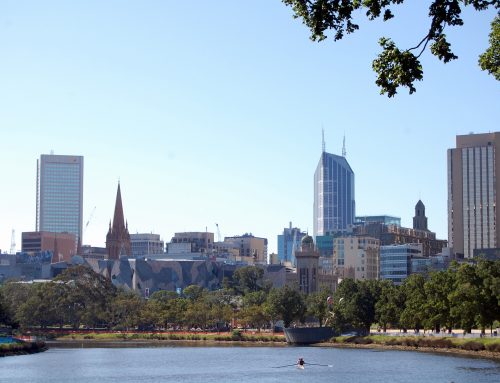How can infrastructure work with ecological dynamics?
The Sand Engine (Zandmotor), is an human-created sand peninsula that is designed to gradually erode in a way that sustains a coastline against coastal erosion. Coastal erosion is increasing world-wide due to climate change driven sea level rise. The Sand Engine represents an example of a new approaches to coastal engineering that work with rather than against nature.

Kitesurfer in the lagoon of the Sand Motor, May 2012. Photo by Smiley.toerist.
The Sand Engine covers an area of about 1 km2, extending about 1 km into the sea and extending about 2 km along the shore. It was created between 2011 & 2012 by dredging and moving 21 million cubic metres of sand offshore in Kijkduin-Ter Heijde, south of the coastal resort town of Scheveningen near Den Haag in the Netherlands. Its purpose is to provide a source for sand to maintain the local beaches and protect the region from coastal flooding. Previously, the beaches along the coast had sand pumped onto them every five years. The Sand Engine was expect to replace this process for about 20 years. Constructing the Sand Engine was expected to be cheaper less disruptive that the frequent dredging and sand pumping.
The project was initiated by the Dutch government in 2011, to test the whether the idea could work and potentially be applied to other locations in the Netherlands. The Sand Motor was developed by Ecoshape, a public-private research consortium of dredging companies, several environmental consultancies, Dutch universities, the Port of Rotterdam, the Province of South Holland, the European Union and others. As an experiment, scientific monitoring has been a large part of the project. The project has funded multiple PhD students and a lab to analyse and collected data to evaluate models used to design the project, to determine how well the project actually worked, and to manage the project. Researchers are studying the weather, waves and currents, changes in sand and water distribution, changes in water quality, biodiversity, as well as how people are using the areas and its management.
In 2016, a five year assessment determined that the project was working well. The results of the project after five years were in 2016, and found to be successful in reducing coastal erosion while enhancing flora and fauna and providing opportunities for recreation.
The video below presents the project.
[youtube https://www.youtube.com/watch?v=m1H-58W7QDk]
and the research
[youtube https://www.youtube.com/watch?v=wtY4_QXcVsM]
The Netherlands Water Boards is considering building another another sand engine near Petten, near the Wadden Islands, to strengthen a weak area of Netherlands coastal protection, which has experienced substantial erosion.
The project has develop a more dynamic relationship between people and nature in one region of the Netherlands, but by enabling learning and the development of skills its lessons and approaches are being applied to other regions, and it aims to support the development of approaches to enable coastal adaptation to sea level rise due to climate change across the world.
For more see:
Inspect the Sand Motor in google maps.
Read an article from Hakai Magazine: In the Netherlands, a Better Way to Rebuild the Beach
Marcel J.F. Stive, Matthieu A. de Schipper, Arjen P. Luijendijk, Stefan G.J. Aarninkhof, Carola van Gelder-Maas, Jaap S.M. van Thiel de Vries, Sierd de Vries, Martijn Henriquez, Sarah Marx, and Roshanka Ranasinghe (2013) A New Alternative to Saving Our Beaches from Sea-Level Rise: The Sand Engine. Journal of Coastal Research: Volume 29, Issue 5: pp. 1001 – 1008. doi: http://dx.doi.org/10.2112/JCOASTRES-D-13-00070.1
And you can read more on research on the Sand Engine at TU Delft.
Or a report on 5th anniversary conference on the Sand Motor from the International Dredging Review.



